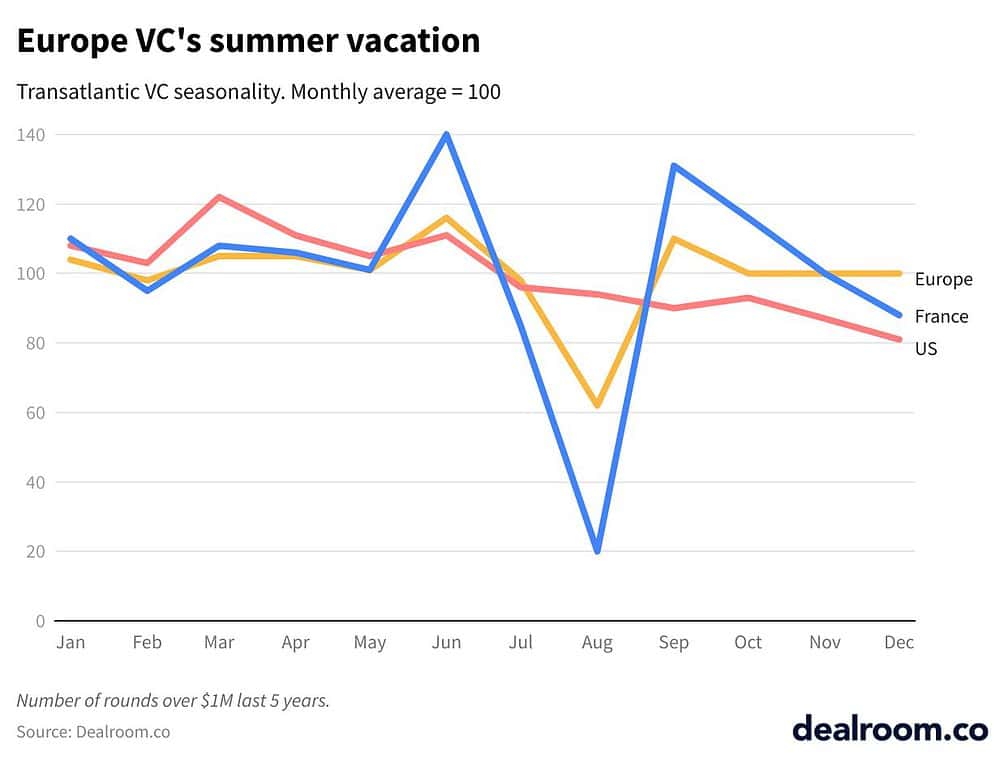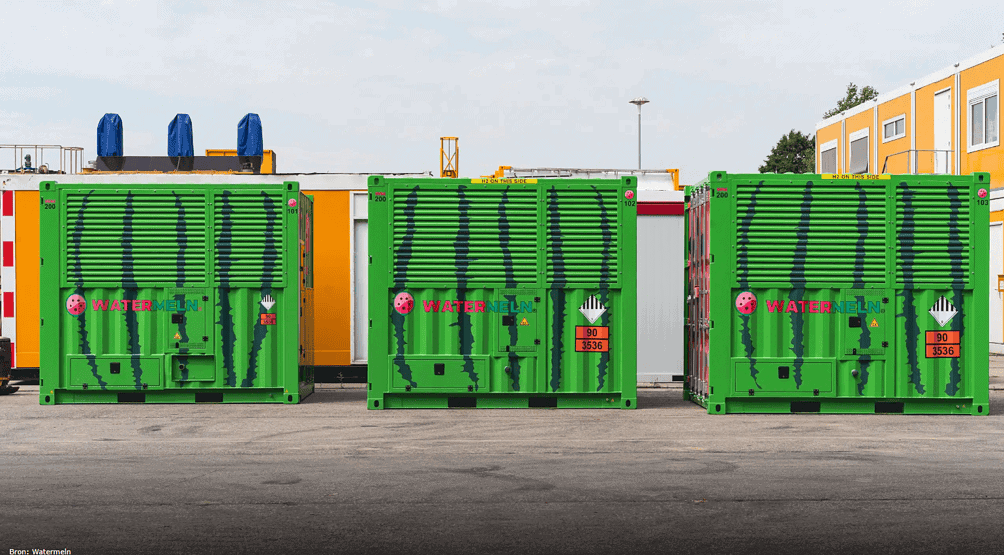
It is no coincidence that Carbyon announced the new investment round in the first week of September. European venture capitalists really disappear in the summer, but make up for it afterwards. Data collected by Dealroom show that VC activity in Europe, and especially in France, reached only 20% of the monthly average in August. With the ‘rentrée’ in September, VCs are back, rested and ready to make up for lost time. This is in contrast to the US, where investment activity remains more stable throughout the year. So, entrepreneurs, dust off that pitch and send that follow-up email. The investment season is open again.
The phenomenon of seasonality in venture capital is no myth. Dealroom.co has collected data showing that European VCs are massively “out of office” in July and August. This leads to a significant drop in investment activity, especially in France where activity in August is only 20% of the annual monthly average.

The American consistency
In the United States, it is a different story. There, investment activity remains relatively steady throughout the year, with a slight dip during Thanksgiving and Christmas. March is the busiest month for U.S. VCs, but deals are consistently closed throughout the rest of the year. This consistency provides a more stable foundation for startups across the Atlantic.
September in Europe marks the return of venture capitalists after the summer break. This month is crucial for startups seeking funding. The “rentrée” means VCs are returning to their desks, ready to make up for missed opportunities from the summer. This is the time to send those follow-up emails and refine pitches.

Strategic financial forecasting
For startups, it is essential to incorporate this seasonality into their cash flow forecasting. By anticipating busy and quiet periods, startups can better respond to fluctuations in revenues and expenses. This not only helps them maintain financial stability but also makes them more attractive to investors.
Startups should be realistic with their forecasts and use financial tools to manage cash flow. It is also helpful to analyze historical data and consult external sources for insight into seasonal trends. By applying these strategies, startups can better handle the challenges of seasonality and increase their appeal to venture capitalists.
With September in full swing, it is time for startups to capitalize on the resurgence of venture capitalists. The summer months may have been quiet, but the coming weeks offer plenty of opportunities. So, entrepreneurs, get ready – investment season is open and European VCs are back in action.

